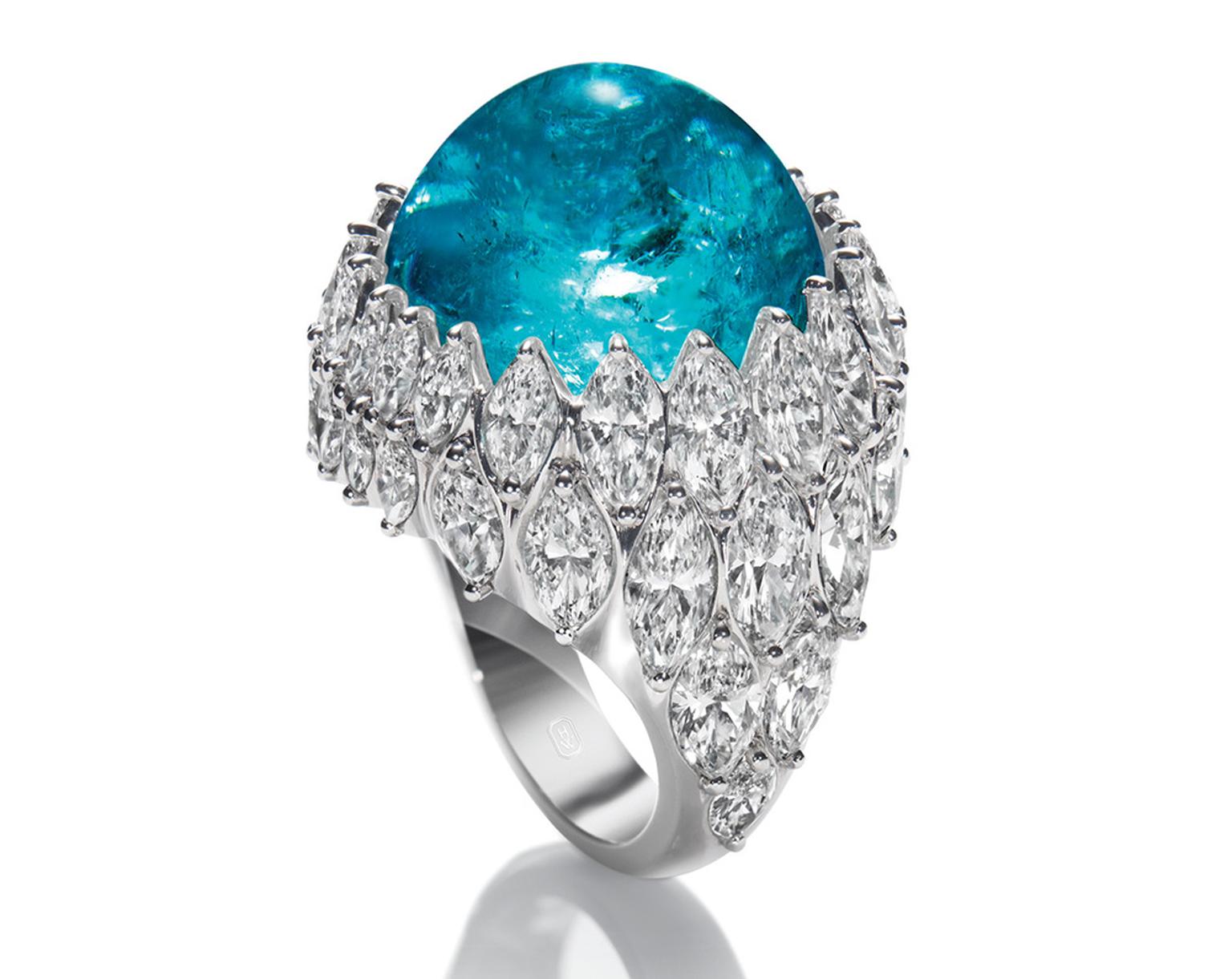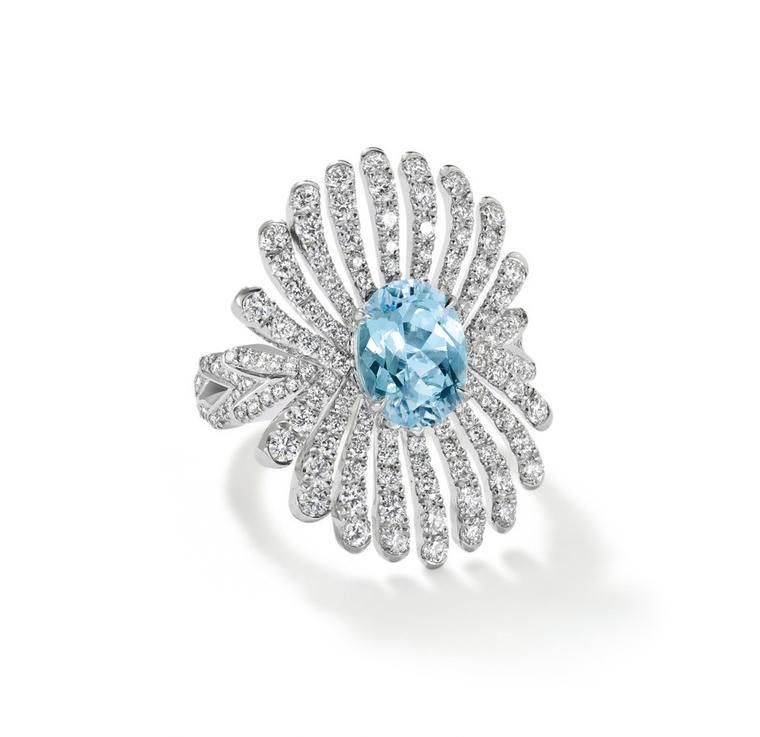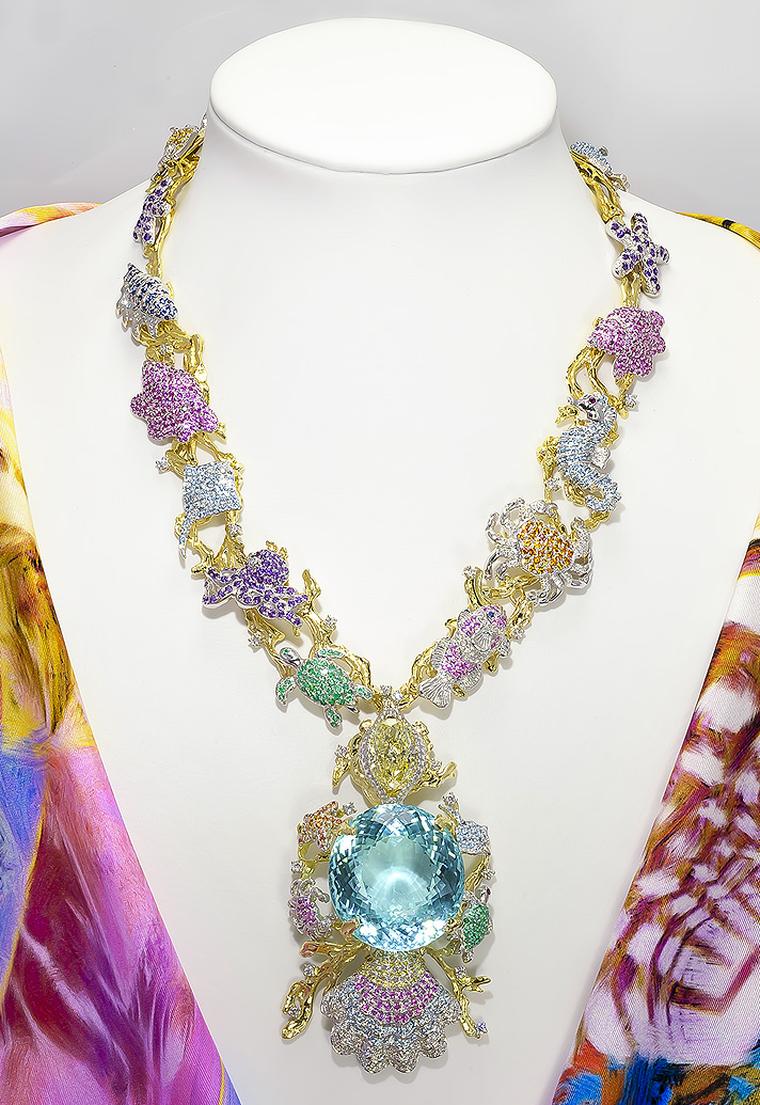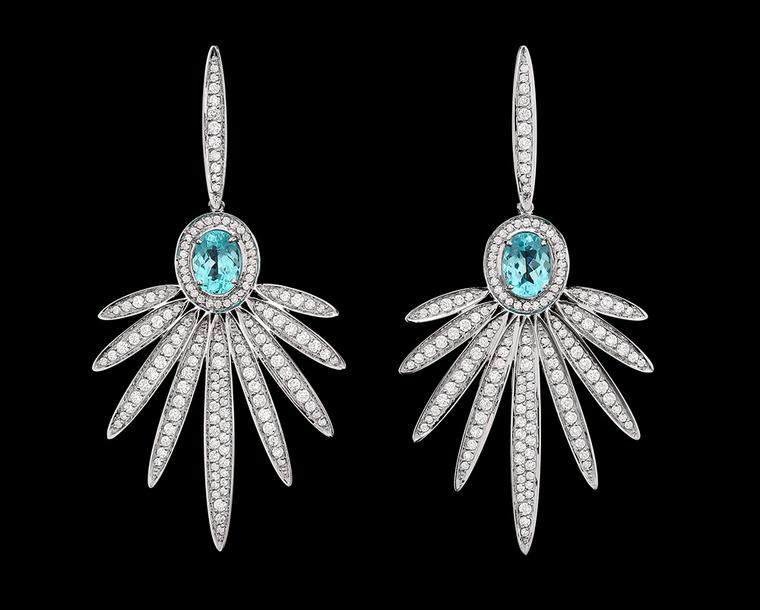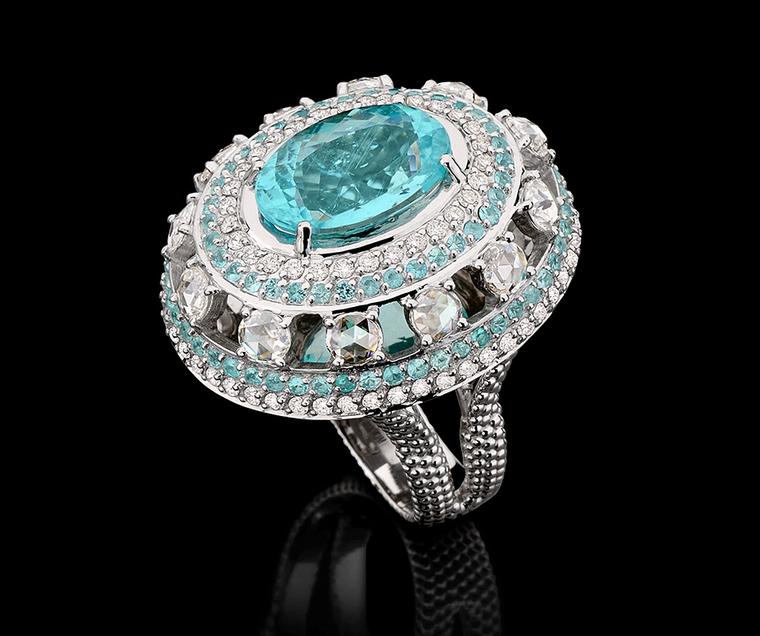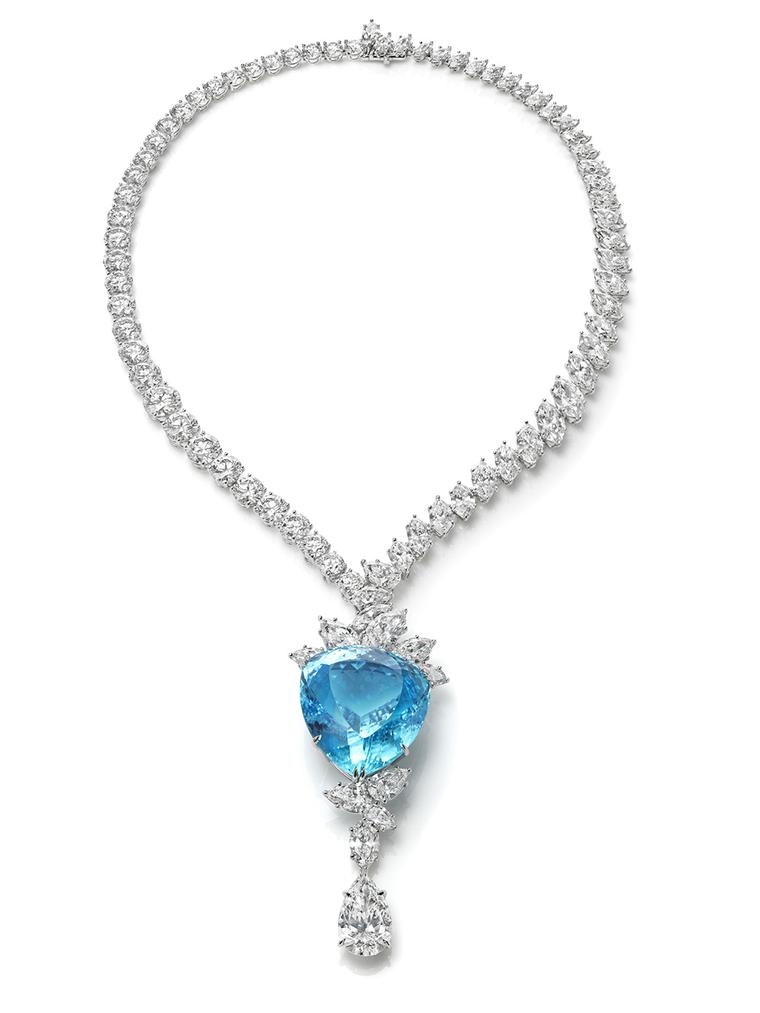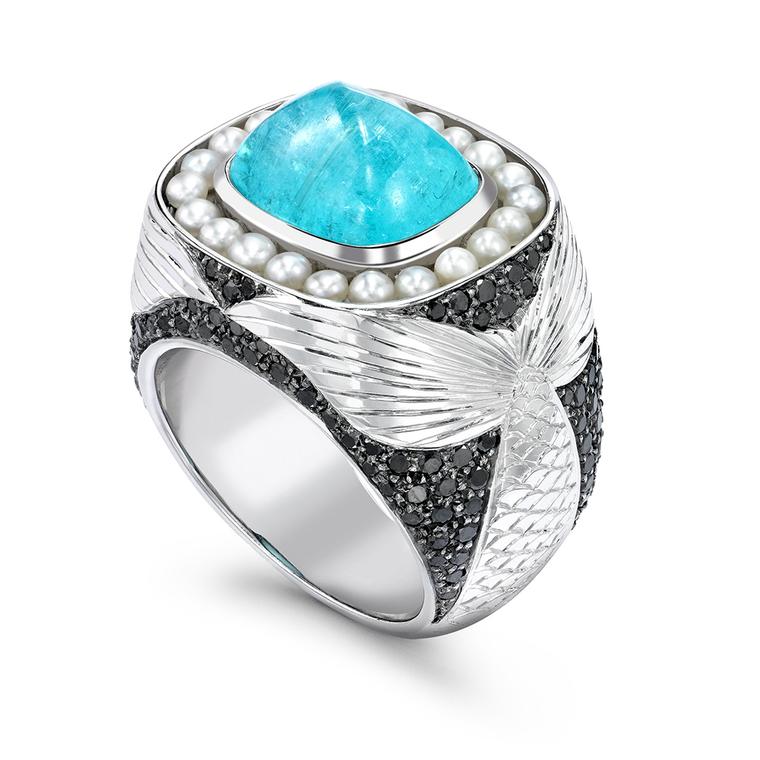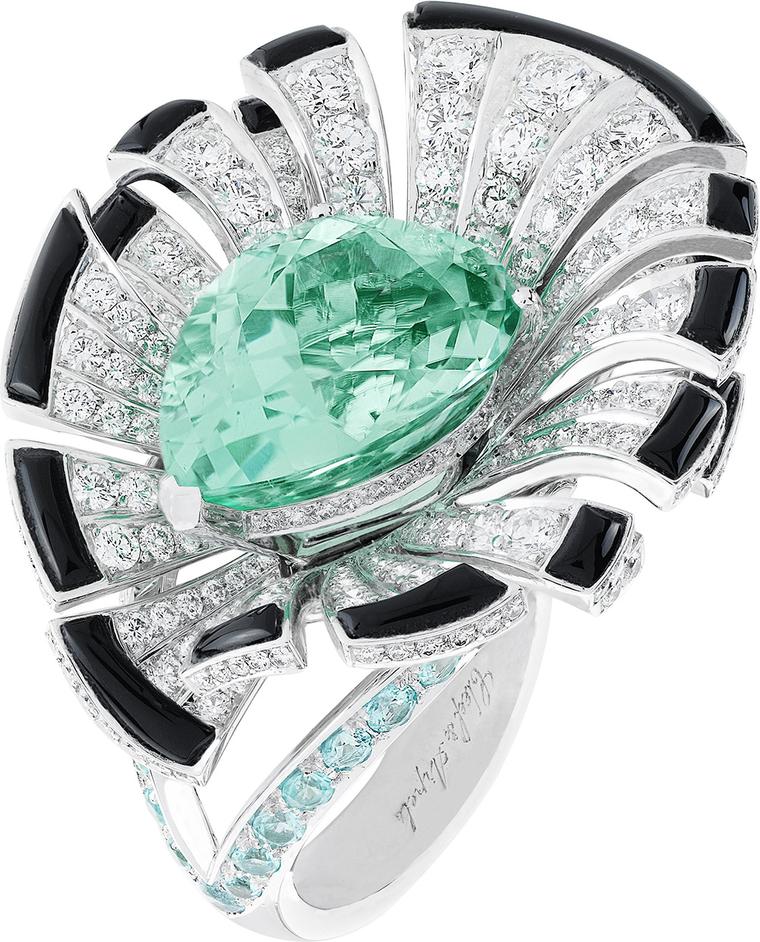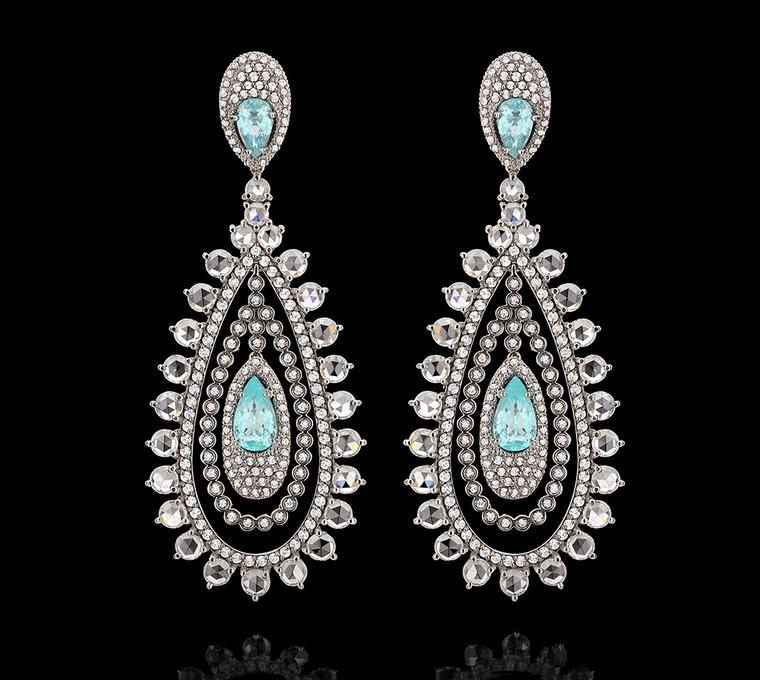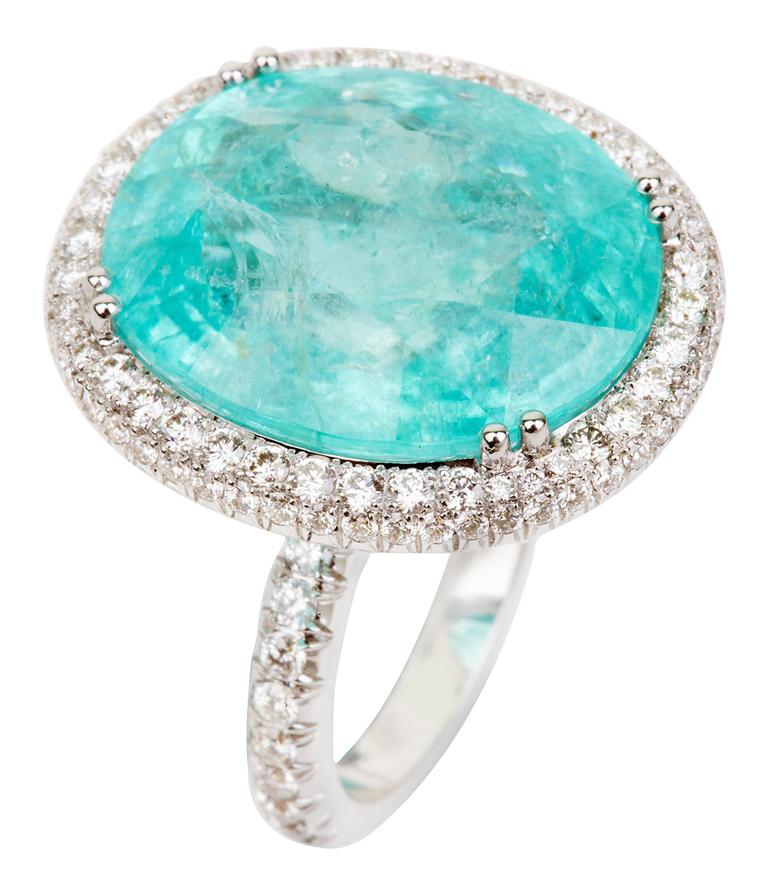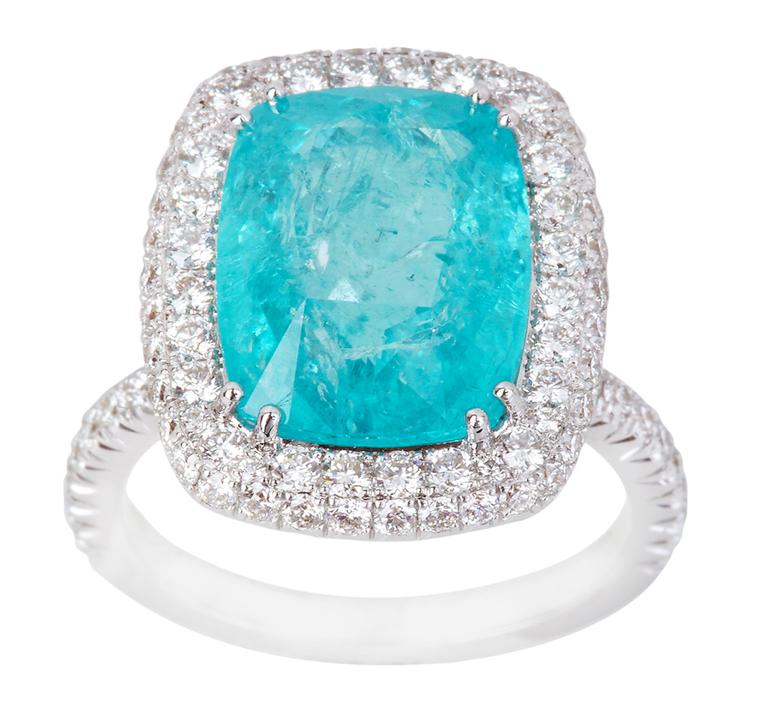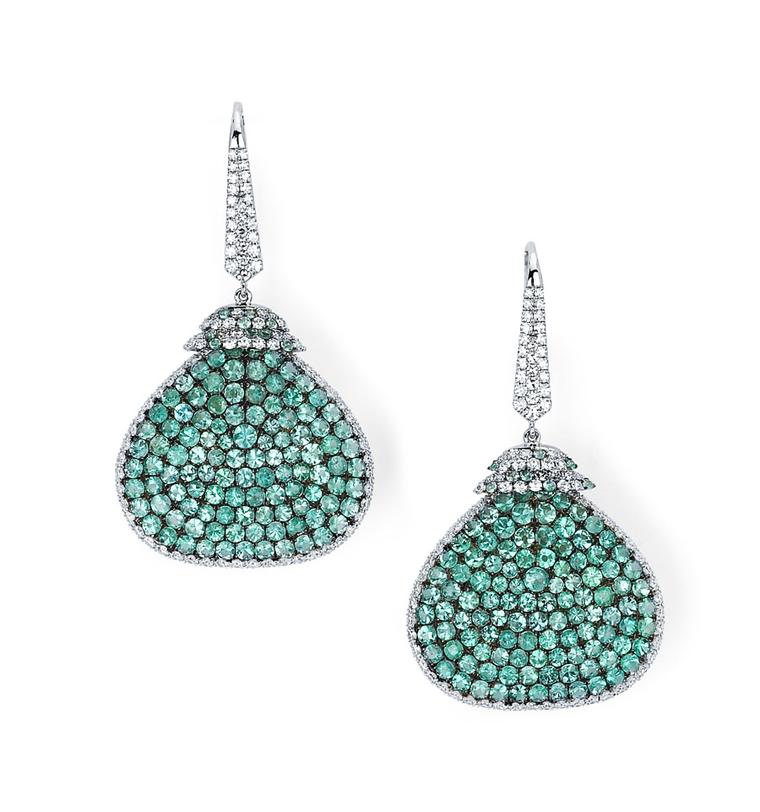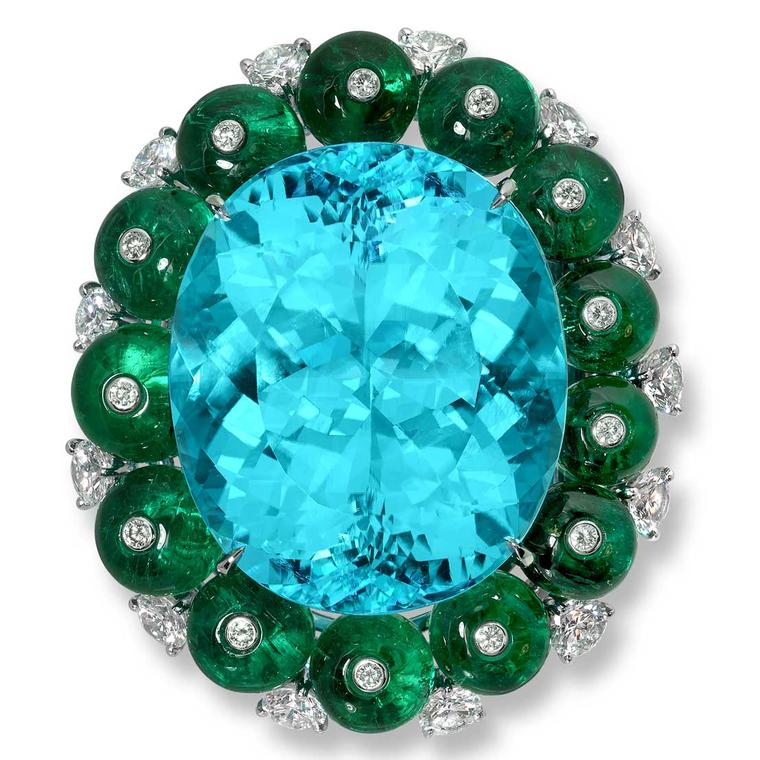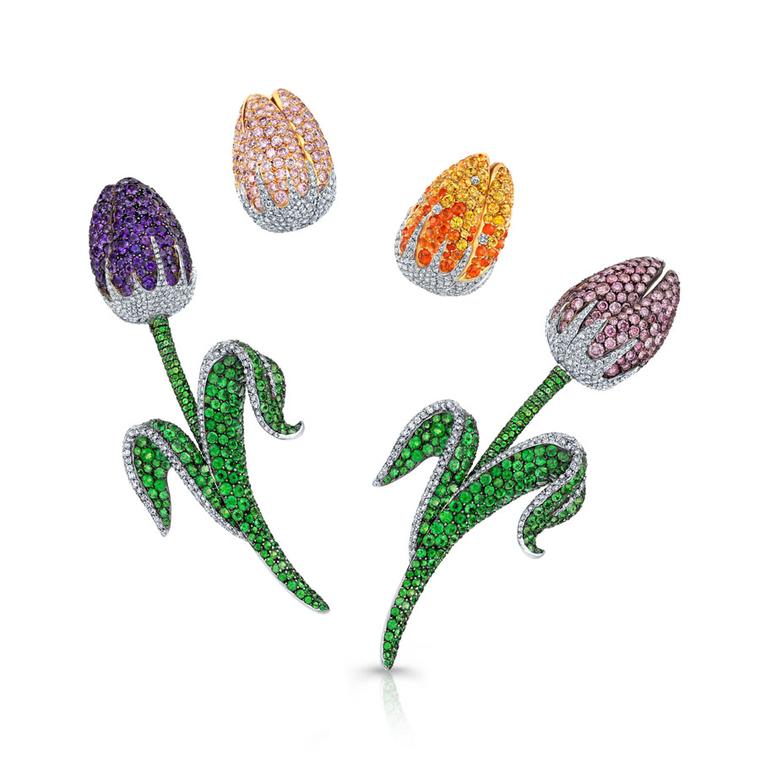The story of the record-breaking Paraiba tourmaline set into a one-of-a-kind necklace by Canadian jeweller Kaufmann de Suisse was one of the most read articles of 2013. Discovered just a few short decades ago, this luminescent stone has become one of the most sought-after gems in the world.
The 191.87ct 'Ethereal Carolina Divine Paraiba' was first unveiled in 2009, more than tripling the previous world record for a cut Paraiba tourmaline. Re-emerging this year in the 'Paraiba Star of the Ocean' necklace, designed by Moneca Kaufmann, president of Kaufmann de Suisse, it will be sold off in 2014 in what is set to be one of this year's big auctions-to-watch. But what is it that makes this rare, electric-bright gem so covetable?
The first Paraiba tourmalines were uncovered in the 1980s by Heitor Dimas Barbosa, who spent years digging in the hills of the Brazilian state of Paraiba on little more than a hunch that he was going to find something special.
Almost every shade of tourmaline can be found in Brazil, but none has the vivid glow that distinguishes the Paraiba tourmaline, also known as cuprian elbaite. A product of the trace element copper, colours range from startling turquoise to majestic blue-green, but it is the neon glow that appears to light up the stone from within that makes the Paraiba tourmaline so unique.
To put their rarity into perspective, there is only one Paraiba tourmaline mined for every 10,000 diamonds, and a good quality Paraiba from Brazil weighing over three carats is virtually unheard of. So rare are authentic Brazilian Paraiba tourmalines that it is not unusual for them to achieve five figures per carat.
In a surprising twist in the Paraiba tale, in 2003, a new wave of luminous green-blue tourmalines entered the market, mined by hand in the copper-rich mountains of Mozambique and Nigeria. Paraiba-like in every way, with only minute chemical differences to those unearthed in Brazil, they are often found weighing five carats or more and have caused an ongoing debate as to what can and can't by definition be called a "Paraiba" tourmaline. Some insist that only tourmalines from the Brazilian state of Paraiba are, indeed, Paraibas, while others are more inclusive.
Read about the arrival of Paraiba-like tourmalines from Africa here
Whichever side of the fence you sit, if you consider why this unique gemstone has turned up in two very different parts of the world, things get very interesting. Look at the outline of the continent of South America and compare it to the coast of Africa and the shape of each indicates that, once upon time, the two are likely to have been conjoined. Which means, at one point, the copper-rich mountains of Brazil were probably a whole lot closer - and quite possibly right next door - to the copper-rich mountains of Mozambique and Nigeria than they are today. Fact or fiction? Nobody knows for sure, which simply adds to the allure of this incredible, one-of-a-kind gemstone.


